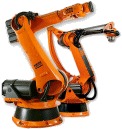
Photo from wikipedia
Theoretical views suggest that tool use and numerical magnitude processing can interact during prospective actions. For example, if a person intends to make a meal for several persons the next… Click to show full abstract
Theoretical views suggest that tool use and numerical magnitude processing can interact during prospective actions. For example, if a person intends to make a meal for several persons the next week, she/he will have to keep in mind during the homework-week large dish and large food portions for this event. Here, the magnitude ‘large’ can influence the future choice for large dishes and other related large tools. This study presents the first empirical evidence supporting this hypothesis. During a prospective memory task that implied to keep in mind a future action, participants were required to use a tool after processing Arabic numbers. Small (less than 5) and large (more than 5) magnitudes were employed as cues for the initiation of the tool-use task, which required participants to use inverse pliers with a small or a large object, but only for some prospective trials. The inverse pliers were used to dissociate the hand action from the tool action with the object (for example, opening the hand produced the closing action of the tool). The results revealed that during prospective trials, number processing interacted only with the tool action toward the object and not with the hand action. Specifically, after the processing of large magnitudes, the initiation of the closing action of the tool (i.e. the opening action of the hand) was reduced. This finding is discussed in the light of theories on the emergence of semantics through tool actions.
Journal Title: Cognitive Processing
Year Published: 2020
Link to full text (if available)
Share on Social Media: Sign Up to like & get
recommendations!